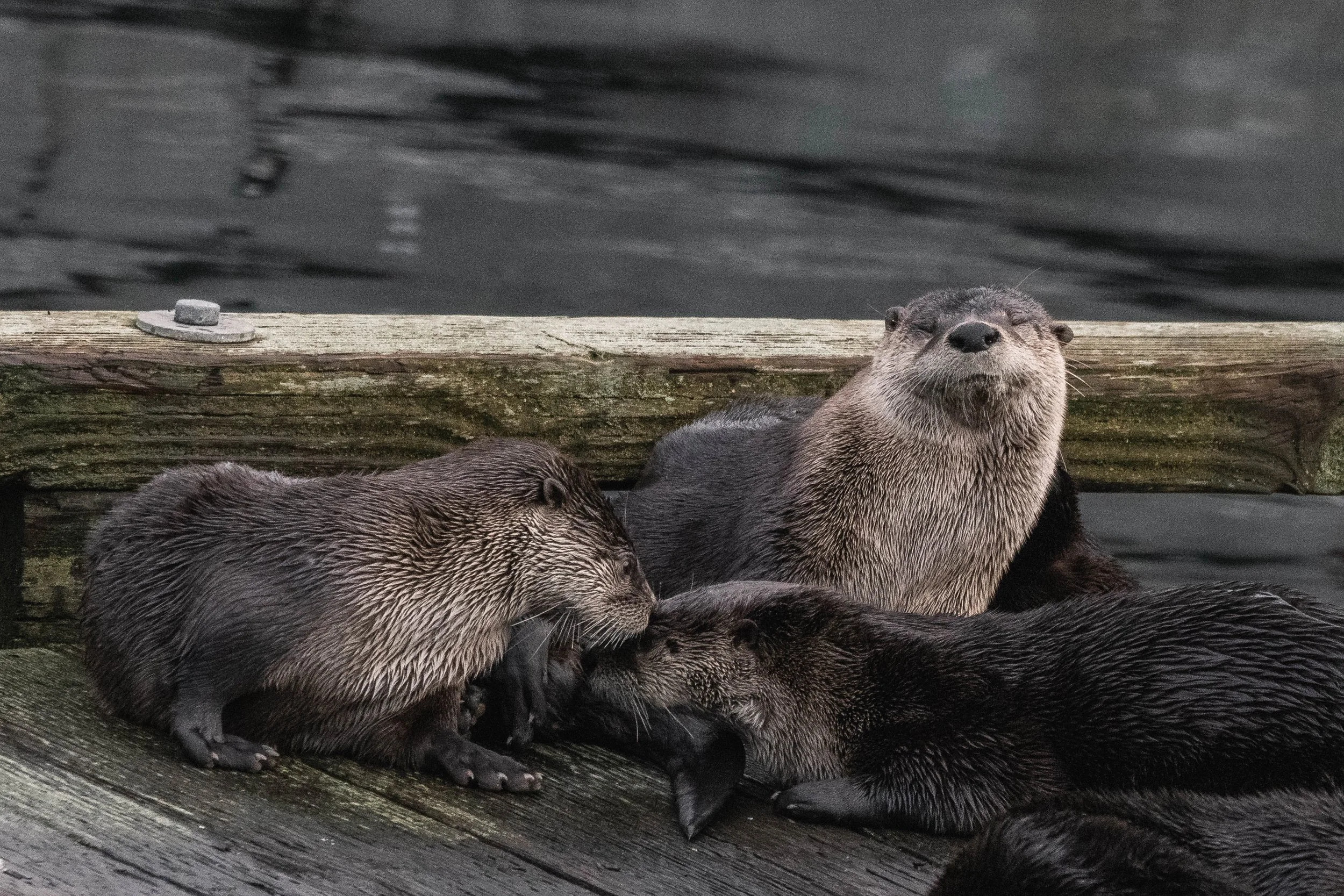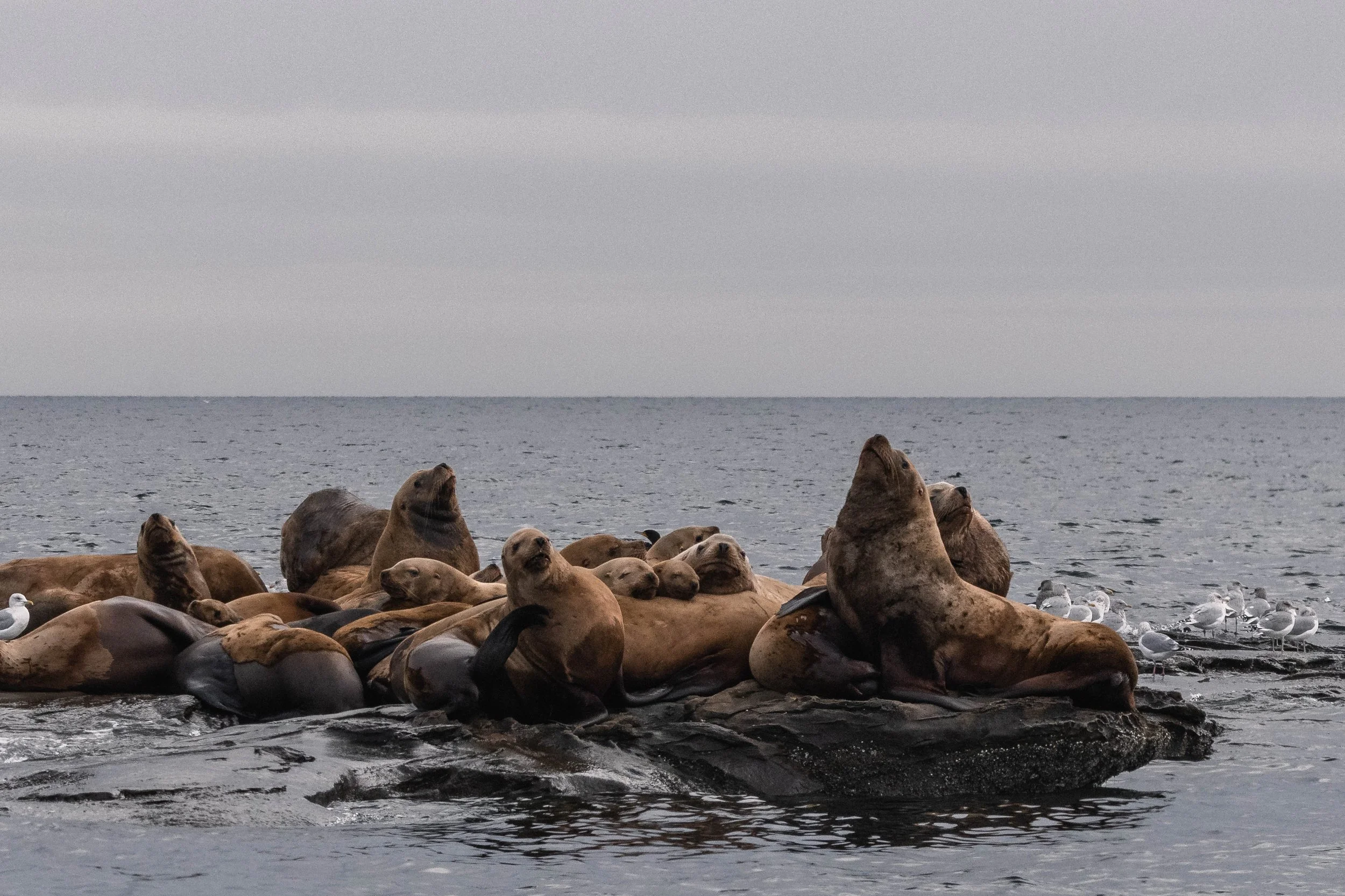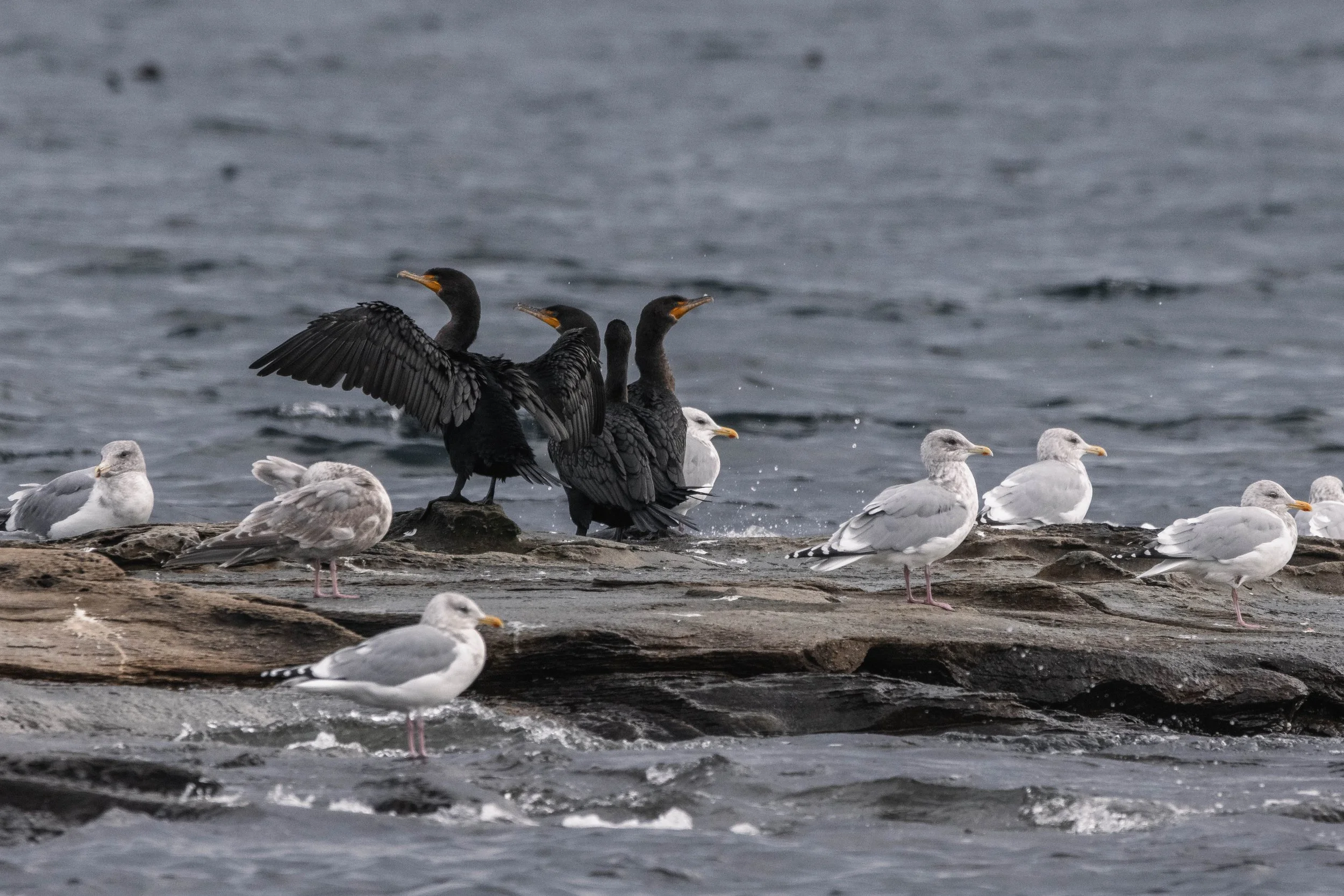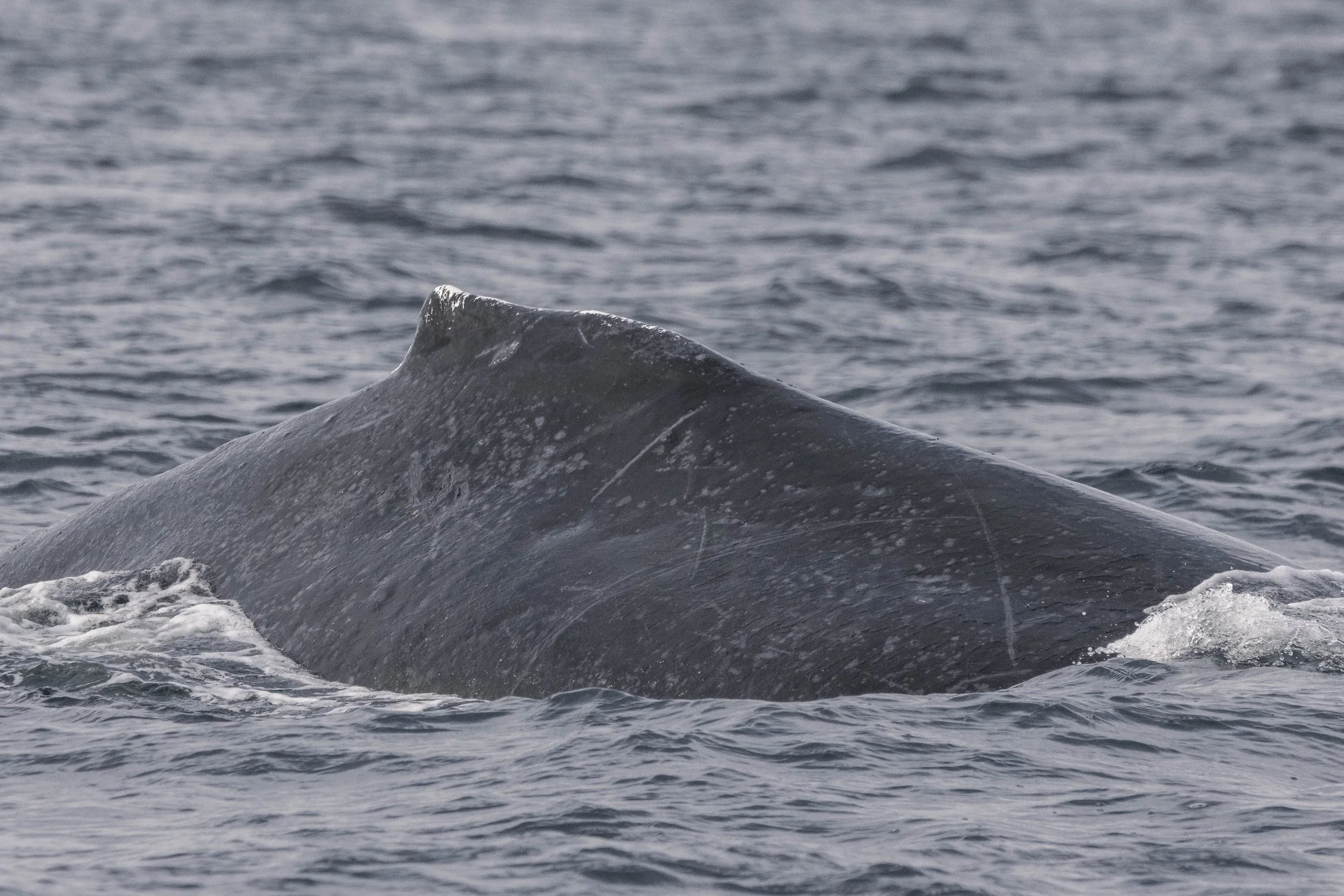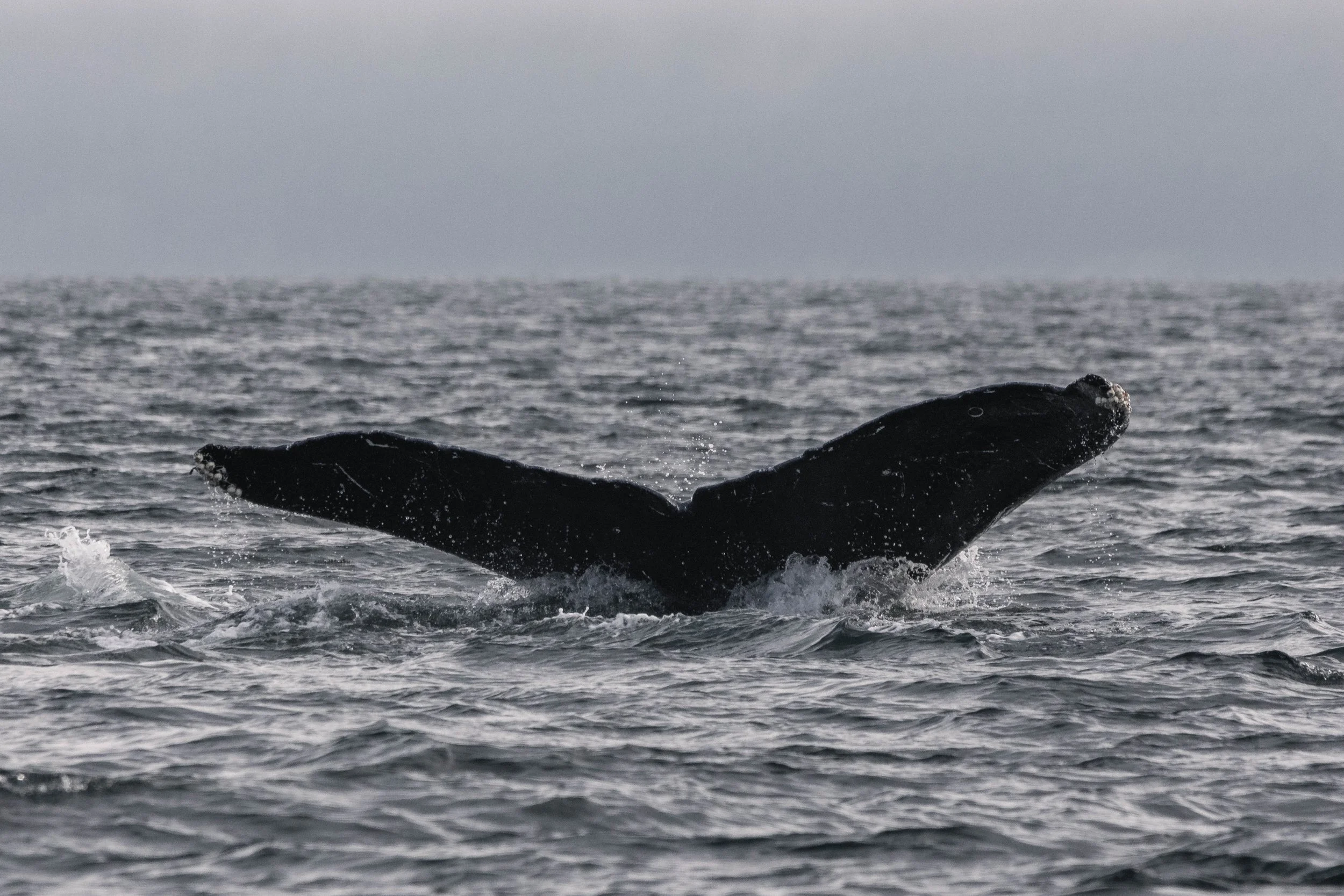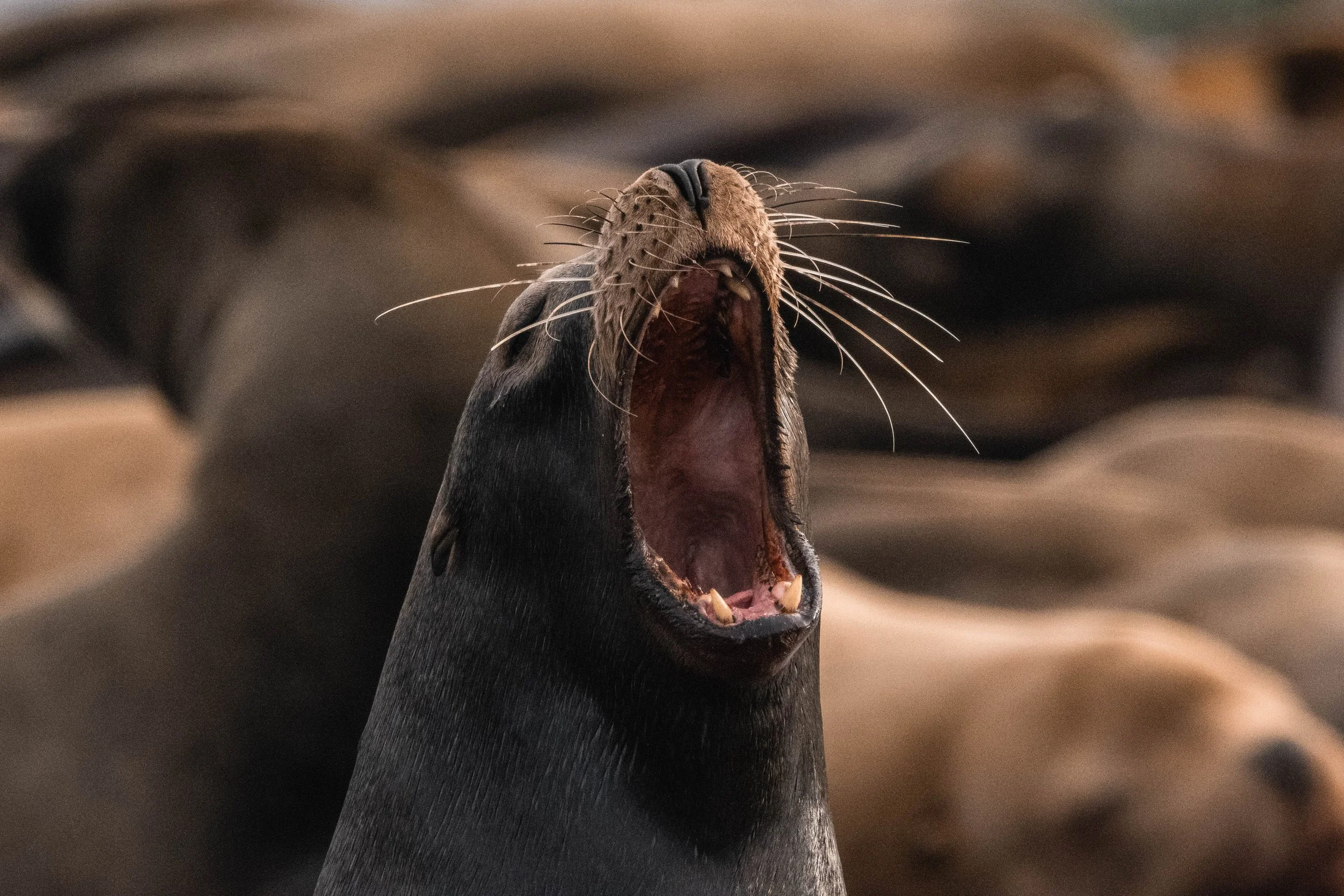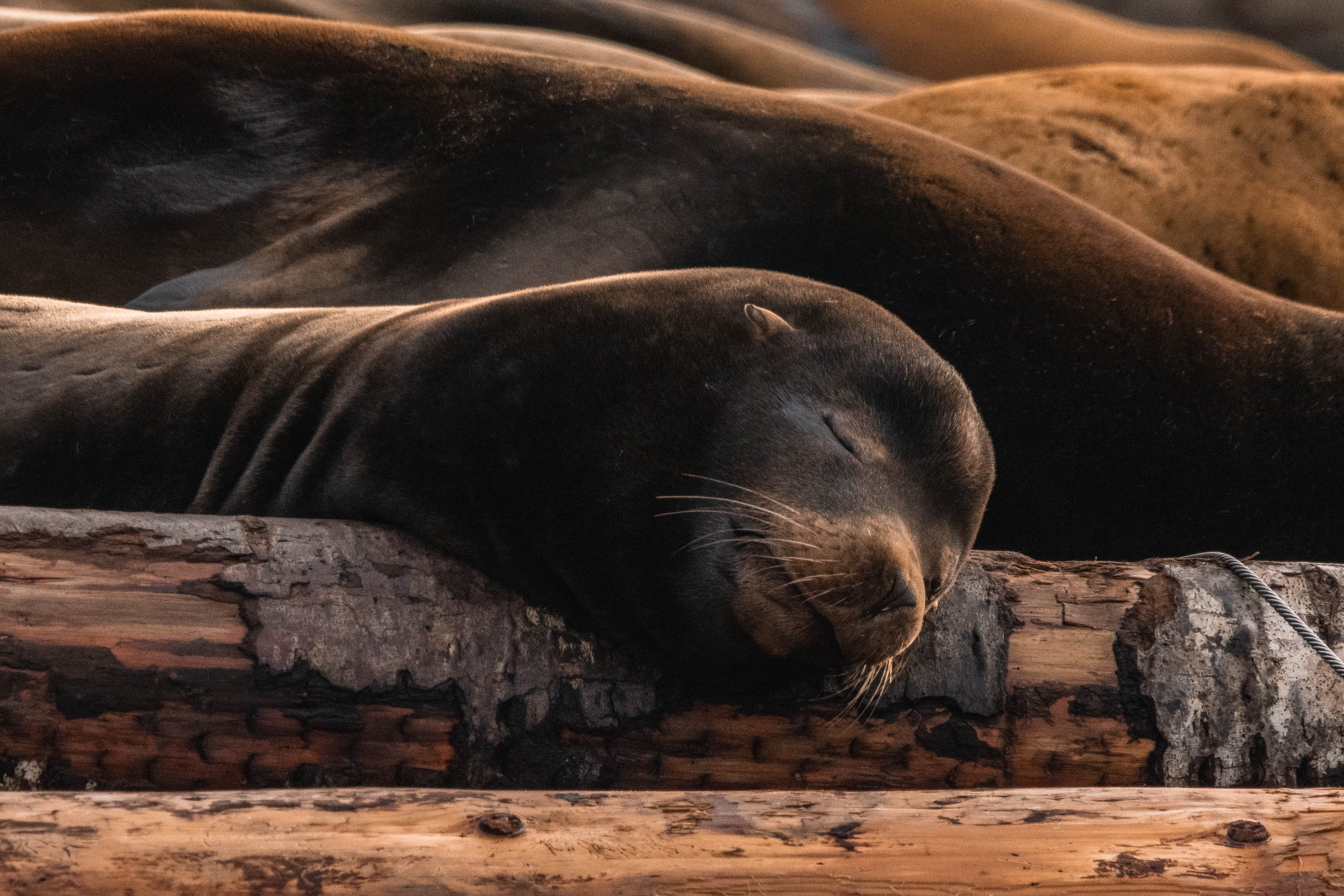November 16, 2025 - Fall feasting in the Salish Sea
We set off from the dock this fall morning aboard our semi-covered vessel, Kula, under pleasantly warm temperatures and low winds, ideal conditions for a day of exploration on the Salish Sea. With only a faint report of some activity near Snake Island, just a short ride from the marina, we pointed our bow in that direction to begin our search. Although the area remained quiet, our morning was far from over.
After scanning the waters around Snake Island, we turned Kula south. We began to follow the eastern shoreline of Gabriola Island, setting our course toward the open stretch of the Strait of Georgia. As our crew and guests scanned the horizon for blows or splashes, a swirl of movement on the surface caught our attention: dozens of feeding seabirds diving and darting across the water. Their presence is always a promising sign, an indication that the Salish Sea is thriving with life below.
As we approached a familiar rocky outcrop known as Stinky Rocks, we were treated to the sight (and sound!) of a bustling haul-out of Steller Sea Lions. Although the tide was high, just enough rock was exposed for these massive pinnipeds to pile together, jostling for the best resting spots.
Steller Sea Lions migrate to our region from as far away as Alaska to take advantage of the rich feeding opportunities the Salish Sea provides. Haul-outs like Stinky Rocks play a crucial role in their daily rhythm; they use them to rest, digest their meals, socialize, and warm up after hours spent hunting in the cold Pacific waters. These impressive animals can weigh over 2500 pounds, yet somehow always manage to stack themselves into neat layers on surprisingly small rocks.
With the sea lions behind us, we continued south along Valdez Island. We had been searching for quite some time when the captain suddenly made a sharp turn, always an exciting sign. Moments later, we saw why: a distant blow had formed just south of Polier Pass. Then another. And another.
As we approached, the dark fall skies seemed to brighten with every exhale, tall, misty blows erupting all across the horizon. We had stumbled into a humpback hotspot, a rich feeding zone clearly teeming with life.
Humpback whales migrate thousands of kilometres between their tropical breeding grounds and our nutrient-rich northern waters. While their winter breeding grounds, such as those off Mexico and Hawaii, are perfect for courting and calving, they’re virtually devoid of food. Because of this, humpbacks must consume 3,000 to 5,000 pounds of food per day while they’re here. From krill to small schooling fish like herring and anchovies, these whales bulk up as much as possible before their long journey south.
And fall is peak feeding season. The Salish Sea becomes a buffet of life, and the humpbacks take full advantage.
Among the many whales around us, we were able to identify seven familiar individuals:
A trio, consisting of Uluka (BCX1702), Malachite (BCY1463), and Neowise (BCY1228), who frolicked and surfaced together. Then, two synchronized pairs, Watson/Cerulean (BCY1461)and Stitch (BCX0519), and the beautiful duo Manta (BCZ0155) and Twinning (BCX1207).
Seeing so many humpback whales in one area is always a powerful reminder of how far this population has come since commercial whaling nearly drove them to extinction. Each sighting represents resilience, protection, and the importance of strong conservation efforts.
After spending an unforgettable stretch of time surrounded by these gentle giants, blows echoing in the still air and flukes lifting gracefully against the steel-grey sky, it was time to begin our journey home.
We took the scenic route back through Polier Pass and into the Southern Gulf Islands, where the coastline glowed with the deep reds, golds, and oranges of fall foliage. With the tide moving swiftly, we rode the currents north through the dramatic corridor of Dodd Narrows, a favourite stretch for its swirling waters and narrow rock walls.
Before returning to the marina, we made one final stop at the Harmac log booms to visit the California Sea Lions, another seasonal migrant species. These sleek and vocal marine mammals travel from California and Oregon to our waters, following the fish-rich currents that bring them north. Known for their constant barking and boisterous behaviour, they were more than happy to announce our arrival. But after a few minutes of raucous sea-lion chatter, the calm of the sea began calling us back.
As we left the log booms behind and cruised quietly through the Salish Sea, the day felt packed with wildlife and the natural magic that makes this region unlike any other.
With thousands of animals migrating through, feeding, resting, and preparing for their subsequent journeys, fall in the Salish Sea is one of the most vibrant times of year. Every trip offers something unexpected, and today was no exception!
Photos below taken by Marine Naturalist Vanessa Vereschahen.
River otters on the dock.
Looking very content.
Steller Sea Lions at “Stinky Rocks”.
Steller Sea Lions taking advantage of the few rocks exsposed at high tide.
Cormorants dry their wings sharing the rocks with gulls.
A common murre floats past.
Uluka’s dorsal fin.
Malachite fluking.
A low fluke from Neowise.
Neowise surfacing with Uluka arching to dive beside.
Uluka fluking as Neowise surfaces beside.
Stitch’s dorsal fin.
Stitch fluking.
Watson’s flukes.
Manta going down.
Twinning fluking.
A moody West Coast sprinkled with fall colours.
A California Sea Lion at the Harmac log booms.
Oh big yawn!
A sleepy California Sea Lion.


